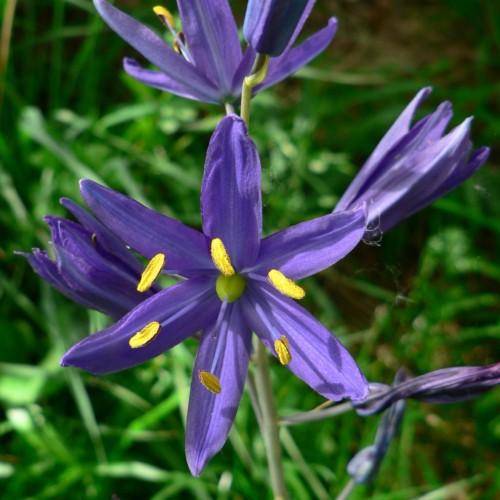
Small Camas
Camassia quamash subsp. azurea
Watering:
Average
Hardiness Zone:
3
Flowers:
Flowers
Sun:
Sun, Partial Shade
Leaf:
Yes
Growth Rate:
Low
Drought Tolerant:
Yes
Salt Tolerant:
Yes
Care Level:
Medium
watering
Small Camas (Camassia quamash) should be watered regularly once or twice a week, depending on the weather and season. During spring and summer, when the plant is actively growing, it should be watered more frequently, 2-3 times per week. During fall and winter, when the plant is dormant, it should only be watered once or twice a week. When watering, make sure to thoroughly saturate the soil until water starts to drain from the bottom of the pot and wait for the topsoil to dry out in between waterings.
sunlight
Small Camas in particular prefers to grow in full sun locations. The plant is more tolerant of partial shade, though it may be less likely to flower. When Small Camas are to be grown in full sun, they should be given several hours of direct sunlight each day, typically about 6 to 8 hours. Morning sun tends to be the best for Camassia quamash, and it's important to avoid exposing the plants to the hot afternoon sun which can lead to wilting. Additionally, the sunniest location should be avoided during the hottest part of the day.
pruning
Small Camas (Camassia quamash) should be pruned in early spring. Pruning should generally be light, focusing on removing any dead leaves or stems and any flower stalks that remain after the blooming period. Pruning can also help to rejuvenate the plant and encourage new growth. However, be careful not to prune too much, as this can significantly reduce the number and size of flowering stalks.
